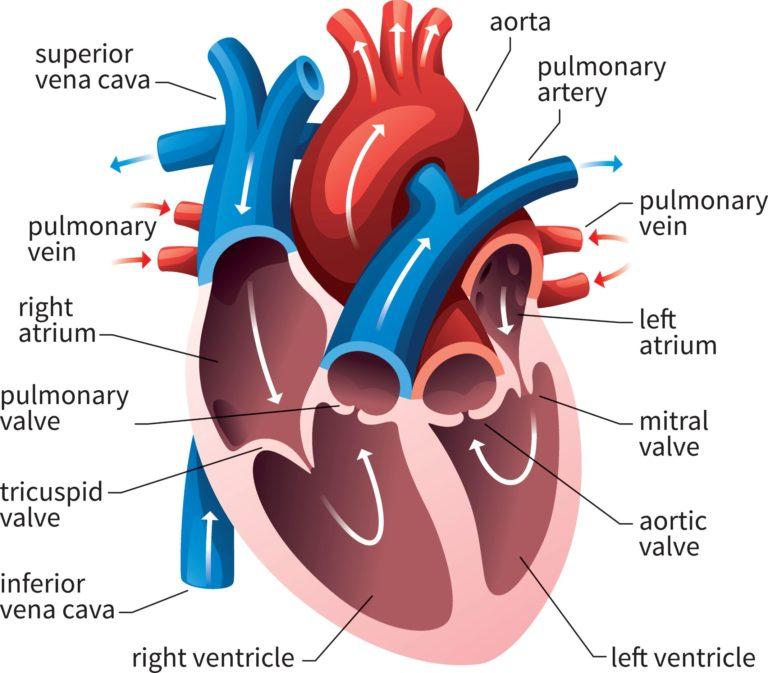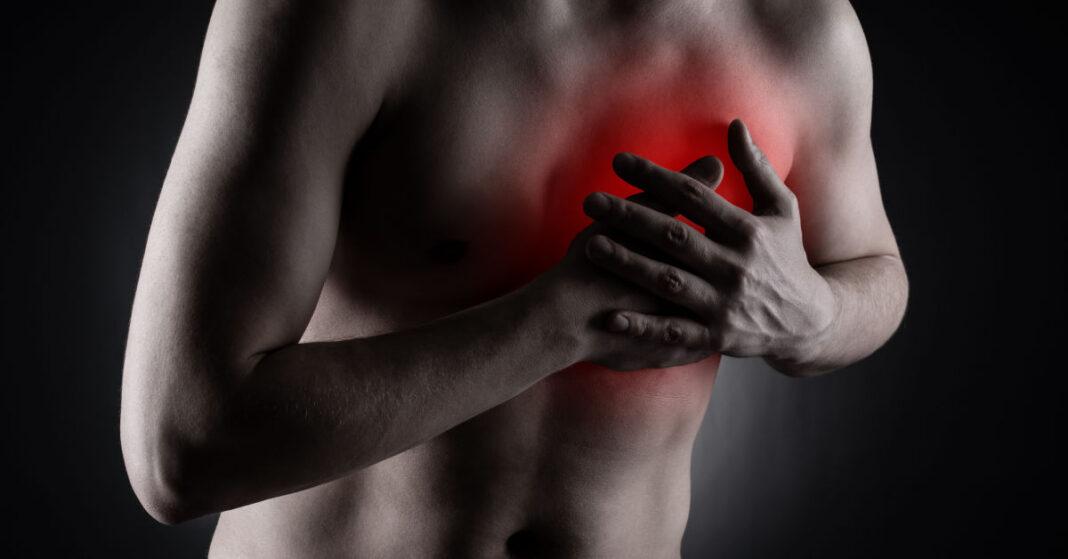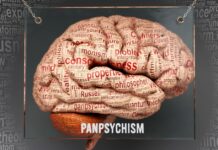When I was in my mid-teens (over 60 years ago!!) I was terrified by an episode in which my heart fluttered and went bump. I was convinced it mean imminent death. I sweated and prayed, as you do…
To my surprise, I was still alive minutes later. In fact I was fine.
But I lived with the shadow of sudden death for years. It kept happening, though not often, and I was frightened to say the least.
My mother took me to the doctors but I was not reassured when he checked me over and said there was nothing wrong. “Incompetent fool,” I thought. “What does he know?”
But I’m still here and still—very occasionally—have the same bumpity scare. It’s called palpitations. It is harmless. It was when I finally went to med school that I learned palpitations IN THE ABSENCE OF OTHER SYMPTOMS are not significant and are NOT associated with increased risk of heart disease or heart attack.
I was really cross… all those years of worry and anxiety were for nothing. But then there was the relief.
Palpitations, it turns out, are quite common. Heart palpitations may be felt in the throat or neck as well as the chest. They can occur during activity or at rest.
One study found that 16% of people saw their primary care provider because they had palpitations. Also, palpitations are one of the most common reasons people visit a cardiologist.
According to the Cleveland Clinic website, causes of palpitations include, but are not limited to:
-
- Emotions, such as anxiety, stress, fear and panic.
- Exercise.
- Pregnancy.
- Caffeine.
- Overactive thyroid.
- Low levels of sugar, potassium or oxygen.
- Low carbon dioxide in your blood.
- Fever.
- Anemia or blood loss.
- Dehydration.
- Medications such as asthma inhalers, beta blockers you take for high blood pressure or heart disease, thyroid drugs and antiarrhythmic medicines.
- Some cough/cold medicines, including decongestants.
- Some herbal and nutritional supplements.
- Recreational drug use such as cocaine and amphetamines (speed).
- Nicotine.
- Alcohol.
Quite a list! But note these triggers are mostly not serious and easily controlled. I would add one of the most common and important, which most doctors don’t even THINK of: food and other allergies.
More Serious Conditions
The problem comes when palpitations are not this common variant, but something more dangerous.
Fast (racing) heart, not related to exercise, can mean a number of things, like overactive thyroid, anemia, fevers, stress or panic attacks. Again, these conditions are only as scary as the actual cause. If your thyroid hormones or anemia are corrected and the heart fluttering goes away… result! It’s not a heart condition.
It’s when some more serious disorder is coming on that there can be worry, or danger.
Dysfunction of the heart’s electronic control system can lead to sudden and potentially dangerous speeding up of the heart: a condition called paroxysmal tachycardia or paroxysmal supraventricular tachycardia (PSVT). (yes, another of those doctor’s crazy words; with an –x- and a –ch- you can bet it’s Greek and it means speeded up heart occurring in bursts, without warning. Supraventricular is just being clever: it means arising from higher up than the ventricles, which are the big chambers of the heart).
Hey, let’s do a bit of anatomy…
This is a great graphic from the Cardiology Associates of Michigan website. You can go visit them at cardofmich.com.

Stay calm! It’s not that complicated, except for which vessels contain oxygenated blood and which don’t…
Blood arrives to the right side of the heart (left side of the illustration) from the “vena cavas”. Those are blue, because less oxygen. This blood goes to the right atrium, then into the right ventricle below and thence to the lungs via the pulmonary artery. Although it’s an artery, the blood is lacking oxygen (hence blue).
Blood coming back from the lungs, via the pulmonary veins, is now RED, because it has oxygen. It goes first to the left atrium, then the left ventricle (which is actually much bigger than the right ventricle but no matter). The left ventricle is the most powerful of the heart’s four chambers and forces blood out into the aorta (top), which splits into many arteries, supplying the whole body (including the heart, by the way, supplied by the so-called coronary arteries).
Nearly there: just add the fact that heart muscle goes on beating, all its life. It can’t stop. Pumping is in its nature.
But the actual beating rate is controlled by an electrical network, starting in the wall of the right atrium. It’s called the sinus node. That’s it… last word, I promise!
Here’s a simplified chart, showing the electrical pathways:

Now here’s the point: the sinus node is “above” the ventricles, hence “supraventricular” tachycardia—from above. It means the sinus node is sending off rapid signals, causing a fast heart.
Irregular hear beats we call arrhythmias (meaning a- or “off” the proper rhythm). Palpitations are a kind of arrhythmia (Greek word, by the way).
There’s another more serious arrhythmia, called atrial fibrillation. Ventricular fibrillation means the heart isn’t driving blood at all. The muscle is just all squiggly and uncoordinated and doesn’t empty. Sorry, you’re dead! That’s when we whip out the cardioversion equipment, or “defibrillator”, to shock the heart and try to get it back into coordinated rhythm.
Sometimes it works. Sometimes it doesn’t.
But atrial fibrillation (aFib) is quite survivable. It just means your heart is bumpy and irregular. The blood still gets out into the circulation but not as efficiently.
Make no mistake, aFib is potentially dangerous; not so much from a drop dead heart attack but more likely a stroke or some other disaster, such as dementia, heart failure or cardiomyopathy.
aFib is not that rare. I’ve had lots of letters over the years, begging me to write about it. My hesitation is only that it needs tackling the right way. If you don’t want to make the commitment, there is not much you can do; just accept the medical position and take the consequences.
WRONG is just pharmaceuticals. RIGHT is find the cause and eliminate it. From what you have read, you’ll already know that allergies—food allergy in particular—is the number #1 cause of aFib.
In fact, as I said in my ONE DIET FOR LIFE (which you will need), there are 5 cardinal symptoms of food allergies:
-
- Over or under-weight, or fluctuating weight
- Excessive sweating not related to exercise
- Fatigue, not helped by rest
- Rapid or irregular recurring heartbeat, particularly after meals, and
- Swellings of the hands, face, eyes in particular, abdomen and ankles
There are many other revealing symptoms but these are the “master” symptoms, if you like. If you have two or more off this list, beware! I mean, get the book! Work through it and throw out the culprits.
Remedies
There are a couple of herbal/homeopathic remedies that are exceptionally helpful.
One is Crataegus (Crataegus oxycantha or Hawthorne), available both as a herbal remedy and a homeopathic preparation. You would use the homeopathic strength called 30C.
But altogether the very best thing is Aurum met (metallic gold) at the strength of 30C. It’s fabadabulous for any cardiac irregularities (OK, not a scientific word, but I’m sure you get it!)
Both of these remedies can be taken along with medications. But if you work further upstream, by investigating food allergies and intolerance, and chemical sensitivities, you may not need ANY remedy!
EMFs
Ooops, I almost forget (no room here). But EMFs, which includes your cellphone, 4G, 5G, etc. can also cause heart irregularities. A 2004 study* concluded that in preliminary experiments, specific low-level EMFs alter heart rate, AV conduction, and heart rhythm. These effects were mediated through the autonomic nervous system inputs to the heart based on adjunctive effect of autonomic nerve stimulation and the inhibitory action of autonomic blockers.
And that means vagus nerve stimulation is guaranteed to help (next week maybe?) Or write me, if you are in a hurry!
Love to All,
Stay well, live long,
Prof. Keith Scott-Mumby
The Official Alternative Doctor
* Cardiol Rev. 2004 Mar-Apr;12(2):85-96. doi: 10.1097/01.crd.0000094029.10223.2f.




